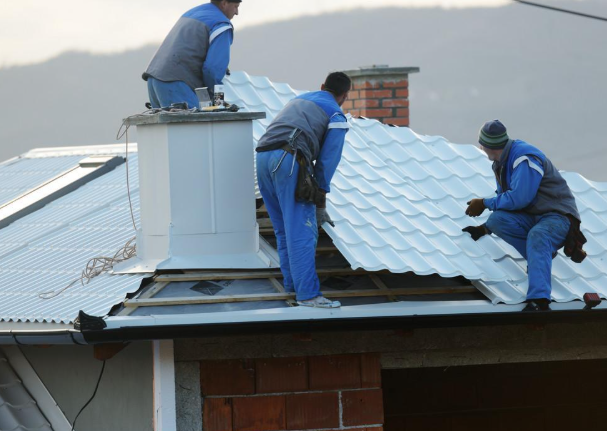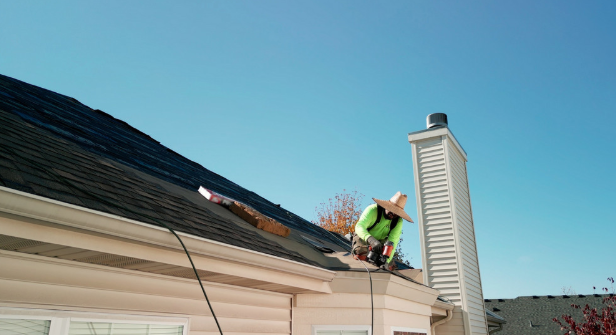The Rise of Metal Roofing in Modern Homes
Metal roofing has seen a significant increase in popularity in recent years, gaining favor for its durability and eco-friendly attributes. Many homeowners are drawn to the range of options available, from sleek modern designs to more traditional looks. According to the Bureau of Labor Statistics, there were over 135,000 roofers in the U.S. as of 2023, a testament to the growing demand for roofing services, including metal installations. As more individuals opt for metal roofs, they enjoy benefits such as longevity and minimal maintenance. The aesthetic versatility of metal roofing makes it an appealing choice for any home style, from modern structures to rustic cottages.
Metal roofing is not only about aesthetics but also about robust performance. One of the main advantages is its ability to withstand extreme weather conditions. Homeowners in areas prone to harsh climates appreciate the resilience that metal roofs offer, ensuring their homes are protected year-round. Additionally, metal roofs reflect solar radiant heat, which can reduce cooling costs by up to 25%, making homes more energy-efficient. This efficiency not only benefits homeowners but also contributes to broader environmental goals.
The sustainability aspect of metal roofing is another major draw. Many metal roofs are made from recycled materials and are themselves fully recyclable at the end of their life. This lifecycle makes metal roofing an environmentally responsible choice for those looking to reduce their carbon footprint. According to experts from This Old House, some metal roofs can last up to 70 years, significantly outlasting traditional roofing materials like asphalt. This longevity reduces the need for frequent replacements, conserving resources and minimizing waste.
The Safety and Durability of Metal Roofing
Safety is a prime concern for any homeowner, and metal roofing stands out as a leader in providing peace of mind. Unlike some roofing materials, metal does not ignite, making it an excellent option for areas at risk of wildfires. Stone-coated steel roofing, in particular, is renowned for its protective capabilities, being lightweight yet incredibly robust. It has received a Class A fire rating and maintains a Class 4 hail impact resistance, ensuring superior protection from the elements. This level of safety means that homes can withstand natural events with minimal damage.
Durability is another hallmark of metal roofing, withstanding time and nature’s forces alike. Metal roofs are resistant to cracking, shrinking, and eroding, common issues seen with more traditional roofing materials. The longevity of metal roofs helps in maintaining the structural integrity of homes over decades. Additionally, the low maintenance required compared to alternatives means less hassle for homeowners. This combination of durability and minimal upkeep serves as a compelling reason for many to choose metal roofing when constructing or updating their homes.
This durability extends to protection against pests as well. Metal roofs are impervious to termites and other pests that can plague other roofing types. This provides an extra layer of security for homeowners, ensuring that their investments are not compromised by infestations. With improved technology, metal roofs come with advanced coatings to prevent rust, further extending their lifespan and maintaining their visual appeal.
Environmental Benefits of Metal Roofing
The environmental benefits of metal roofing position it as a sustainable option in the construction industry. With a high percentage of metal roofing material being recyclable, the ecological impact is significantly lower than that of traditional roofing materials. Stone-coated steel roofs, specifically, are entirely recyclable and much lighter, reducing transportation emissions and installation impacts. The lightweight nature of these roofs, just 1.4 pounds per square foot, translates to reduced demand on structural elements. This efficiency not only conserves resources but supports a more sustainable home building and renovation industry.
Metal roofs contribute to energy efficiency through their reflective properties. By deflecting solar heat, they help maintain cooler temperatures within homes during the warm months, leading to reduced air conditioning usage. This reduced energy demand directly corresponds to lower utility bills and decreased environmental strain. As energy efficiency becomes increasingly vital as a selling point for homes, metal roofs offer a significant advantage for environmentally conscious homeowners. They embody a commitment to reducing carbon footprints while enjoying the practical benefits of cost savings.








